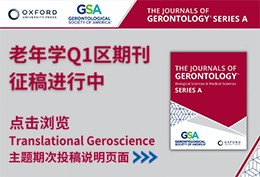当前位置:
X-MOL 学术
›
J. Am. Chem. Soc.
›
论文详情
Our official English website, www.x-mol.net, welcomes your
feedback! (Note: you will need to create a separate account there.)
Decoding the Competing Effects of Dynamic Solvation Structures on Nuclear Magnetic Resonance Chemical Shifts of Battery Electrolytes via Machine Learning
Journal of the American Chemical Society ( IF 15.6 ) Pub Date : 2025-04-18 , DOI: 10.1021/jacs.5c02710 Qi You , Yan Sun , Feng Wang , Jun Cheng , Fujie Tang
Journal of the American Chemical Society ( IF 15.6 ) Pub Date : 2025-04-18 , DOI: 10.1021/jacs.5c02710 Qi You , Yan Sun , Feng Wang , Jun Cheng , Fujie Tang
Understanding the solvation structure of electrolytes is critical for optimizing the electrochemical performance of rechargeable batteries as it directly influences properties such as ionic conductivity, viscosity, and electrochemical stability. The highly complex structures and strong interactions in high-concentration electrolytes make accurate modeling and interpretation of their “structure–property” relationships even more challenging with spectroscopic methods. In this study, we present a machine learning-based approach to predict dynamic 7Li NMR chemical shifts in LiFSI/DME electrolyte solutions. Additionally, we provide a comprehensive structural analysis to interpret the observed chemical shift behavior in experiments, particularly the abrupt changes in 7Li chemical shifts at high concentrations. Using advanced modeling techniques, we quantitatively establish the relationship between the molecular structure and NMR spectrum, offering critical insights into solvation structure assignments. Our findings reveal the coexistence of two competing local solvation structures that shift in dominance as electrolyte concentration approaches the concentrated limit, leading to an anomalous reversal of 7Li NMR chemical shift in the experiment. This work provides a detailed molecular-level understanding of the intricate solvation structures probed by NMR spectroscopy, leading the way for an enhanced electrolyte design.
中文翻译:

通过机器学习解码动态溶剂化结构对电池电解质核磁共振化学位移的竞争效应
了解电解质的溶剂化结构对于优化可充电电池的电化学性能至关重要,因为它直接影响离子电导率、粘度和电化学稳定性等特性。高浓度电解质中高度复杂的结构和强相互作用使得使用光谱方法准确建模和解释它们的“结构-性质”关系更具挑战性。在这项研究中,我们提出了一种基于机器学习的方法来预测 LiFSI/DME 电解质溶液中动态的 7Li NMR 化学位移。此外,我们还提供了全面的结构分析,以解释实验中观察到的化学位移行为,特别是高浓度下 7Li 化学位移的突变。使用先进的建模技术,我们定量地建立了分子结构和 NMR 谱之间的关系,为溶剂化结构分配提供了重要的见解。我们的研究结果揭示了两种相互竞争的局部溶剂化结构共存,当电解质浓度接近浓缩极限时,它们的优势发生变化,导致实验中 7Li NMR 化学位移的异常逆转。这项工作提供了对 NMR 波谱探测的复杂溶剂化结构的详细分子水平理解,为增强的电解质设计铺平了道路。
更新日期:2025-04-18
中文翻译:

通过机器学习解码动态溶剂化结构对电池电解质核磁共振化学位移的竞争效应
了解电解质的溶剂化结构对于优化可充电电池的电化学性能至关重要,因为它直接影响离子电导率、粘度和电化学稳定性等特性。高浓度电解质中高度复杂的结构和强相互作用使得使用光谱方法准确建模和解释它们的“结构-性质”关系更具挑战性。在这项研究中,我们提出了一种基于机器学习的方法来预测 LiFSI/DME 电解质溶液中动态的 7Li NMR 化学位移。此外,我们还提供了全面的结构分析,以解释实验中观察到的化学位移行为,特别是高浓度下 7Li 化学位移的突变。使用先进的建模技术,我们定量地建立了分子结构和 NMR 谱之间的关系,为溶剂化结构分配提供了重要的见解。我们的研究结果揭示了两种相互竞争的局部溶剂化结构共存,当电解质浓度接近浓缩极限时,它们的优势发生变化,导致实验中 7Li NMR 化学位移的异常逆转。这项工作提供了对 NMR 波谱探测的复杂溶剂化结构的详细分子水平理解,为增强的电解质设计铺平了道路。















 京公网安备 11010802027423号
京公网安备 11010802027423号